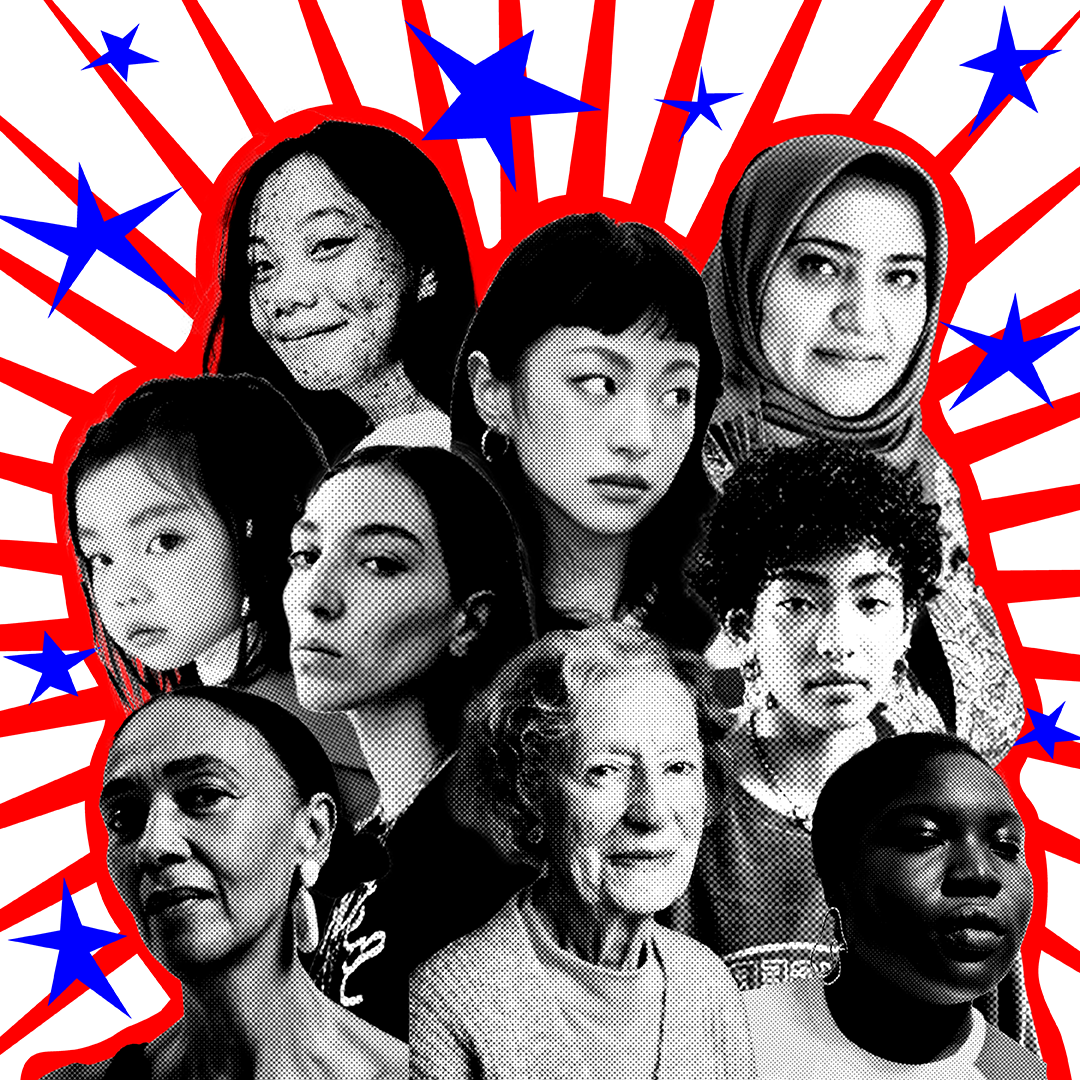Editor’s Note: This article contains mention of mental health issues and suicide. Anyone who may be struggling should call the Suicide and Crisis Lifeline at 988 or Counseling and Psychological Service’s emergency hotline at 828-262-3180.
Feminism is more important today than ever before. With the celebration of Women’s History Month, highlighting the efforts of past feminists is necessary to bring modern women together, especially while the U.S. seeks to restrict inclusion and promote conformity.
Without collective respect from both individuals and the government for human rights and crucial freedoms, the U.S. will only grow more divided.
Division has already begun. In January, President Donald Trump signed an executive order asserting that, “It is the policy of the United States to recognize two sexes, male and female. This order was paired with three other mandates, all of which rescinded diversity, equity and inclusion programs, labeling them as “radical,” “wasteful,” “divisive” and “dangerous.”
Trump believes that diversity, equity and inclusion policies “threaten” the safety of U.S. citizens, and eliminate the value of “individual merit, aptitude, hard work, and determination.”
He could not be more wrong.
Diversity initiatives are crucial to the functioning of this country. By eliminating the need for a diverse workforce, divergent ideas, opinions and experiences are subsequently eliminated. If every citizen in the U.S. all believed and agreed on every topic, with any disagreements undervalued and silenced, no change would ever occur.
This concept of intersectionality will continue to be crucial to the U.S.’s success. The moment diverse people are silenced, to be forced to acquiesce, will mark the end of prosperity on U.S. soil.
In late January and early February, Trump signed a set of three orders placing restrictions on transgender individuals in the U.S.
On January 28, Trump mandated that “children,” viewed as those under the age of nineteen, will be restricted from puberty blockers, and surgeries that aim to “transform an individual’s physical appearance to align with an identity that differs from his or her sex or that attempt to alter or remove an individual’s sexual organs to minimize or destroy their natural biological functions.”
This order was followed by two others: one that concentrated on the “radical indoctrination” within K-12 schooling, preventing the discussion of physical or social differences, directly referencing sex, race, gender identity and national origin.
The other restricted the participation of transgender women in women’s sports, asserting it is “demeaning, unfair, and dangerous to women and girls, and denies women and girls the equal opportunity to participate and excel in competitive sports.”
To directly restrict any forms of social diversity will only cause further division than before. Emphasis should be placed on the importance of the differences between people, as our differences are what used to be so valued about U.S. society.
The political movements that began surrounding the concept of intersectionality, namely feminism, are not a new ideology. The support of diverse individuals needs to once again become the basis for all conversations surrounding diversity, including race, sex, sexuality, ethnicity and gender identity.
Feminism and the transgender rights movement have always been an interwoven battle. The first-wave feminists, such as Elizabeth Cady Stanton, Charlotte Perkins Gilman, Betty Friedan, Mary Wollstonecraft and Susan B. Anthony established the basis for not only women’s rights, but the rights of transgender people.
The Seneca Falls Convention of 1848 is credited with the beginnings of the feminist movement. The convention was organized by a group of five influential women — Stanton, Lucretia Mott, Martha Wright, Mary McClintock and Jane Hunt — whose efforts toward equality for women should not be brushed aside.
Stanton completed the “Declaration of Sentiments” in just eight days in 1848, a document modeled after the Declaration of Independence and drafted in an effort to obtain women’s suffrage, the right to education, the right to own property and societal equality. The document asserted: “We hold these truths to be self-evident: that all men and women are created equal.”
The document’s contents generated much discussion among the 300 attendees, especially regarding the call for women’s suffrage. The 19th Amendment was ratified in 1920 and granted white women the right to vote in local and national elections, but it did little to help women of color.
Women of color suffered from voter suppression through literacy tests and poll taxes for many years after the 19th Amendment was passed. Literacy tests were employed in Southern states, an exam implemented at the polls to assess an individual’s ability to read and understand English, which often prevented Black people from registering to vote.
Literacy tests were a form of anti-literacy laws, which prohibited both free and enslaved individuals from learning how to read, write or spell. It was believed that if Black people gained knowledge, society would be doomed. By putting restrictions on the intellect and humanity of Black people, confederate states were successful in preventing them from voting.
The Voting Rights Act would be passed in 1965, 45 years after the ratification of the 19th Amendment. The act granted protection and the right to vote to racial and linguistic minorities through the banning of literacy tests, other forms of voting prerequisites, vote dilution and racial gerrymandering.
A focus on the equal rights of individuals has always been the basis of democracy and will continue to be crucial to the existence of a democratic government. Without equal rights and diversity, there would be no democracy to speak of. The United States Commission on Human Rights asserts one of the main aspects of democracy is the “respect for human rights and fundamental freedoms, including freedom of opinion and expression, and freedom of association.”
The first feminists were regularly found alongside other minorities, assisting them with their own fights for equal rights.
Taking a page from the efforts employed by these women would be the best course of action within the U.S.’s current political and social climate. By returning focus to the core aspects of feminism and the long-held beliefs established at the beginning of the movement, U.S. citizens can begin to place emphasis on mutual similarities while also highlighting the importance of social differences through the application of intersectionality.
Feminism places a large degree of emphasis on the concept of intersectionality, which is defined as “the complex, cumulative way in which the effects of multiple forms of discrimination (such as racism, sexism, and classism) combine, overlap, or intersect especially in the experiences of marginalized individuals or groups.”
The connection of identities — race, class, sexual orientation and gender identity — is crucial to the dissolution of traditional gender roles and stereotypes, the recognition of bodily autonomy and the right for individuals to make decisions about their own reproductive health, sexual orientation and gender identity.
Intersectionality is also an important step in recognizing the oppressive aspects of society in the U.S. By studying the overlap of societal injustices such as “racism, classism, ableism, sexism, and xenophobia,” we are well-equipped to “investigate the root causes of gender-based violence and other forms of oppression.”
With the continuance of Trump’s enactment of restrictive executive orders, community and connection between marginalized groups will be crucial. In the U.S., 50.2% of lesbian, gay and bisexual adults experience prevalent mental health issues, and 21.4% of Black people and 20.7% of Hispanic individuals face these problems.
LGBTQ+ youth are four times more likely to attempt suicide than straight youth, with 45% of them experiencing severe suicidal thoughts. Transgender adults are nine times more likely to attempt suicide at some point in their lives compared to the general public.
If minority groups begin to feel as though they are socially undervalued, especially by those in power, these thoughts or feelings have the potential to increase. The displacement many individuals may begin to experience could be devastating, which is why it is all the more important to establish bonds with those who are likely sharing the same sentiments.
According to The Suicide Prevention Resource Center, social support and connection are a key defense against suicide.
“Positive and supportive social relationships and community connections can help buffer the effects of risk factors in people’s lives,” according to the website.
Group connections, specifically within minority communities, can provide the emotional support suicidal individuals need by shifting the focus to shared cultural traditions and history and can encourage a sense of community and belonging among those who are similar to you.
By fostering these bilateral relationships, U.S. citizens can shift their individual and communal outlook to view intersectionality as the norm, benefitting those within their communities that may be suffering from increased feelings of suicidal thoughts, but also changing the perspective of those outside of these communities to develop a more supportive mindset.
Intersectionality needs to be at the forefront of U.S. society now more than ever. In a time where diversity, equity and inclusion initiatives are being stripped away, forming relationships with other individuals who face the same struggles is essential. Finding a place to belong under a government that seeks to restrict other individuals at every step will make things just a little more bearable.




patrick richardson • Apr 3, 2025 at 9:05 am
An unmentioned hero- and arguably more significant than Susan B Anthony, was Alice Paul. Three professional degrees, a mastery of what would now be called social media, and an iron will made her a formidible force for women’s rights. She was one of the most critical people in making the 19th Amendment come about. She organized the first 24 hour protests at the white house, arranged major demostrations, and was jailed (and other members of the National Women’s Party tortured). Please look her up at the the Alice Paul center for gender justice or on Wikipedia. She is one of my heroes- so much so i made an oil painting of her.